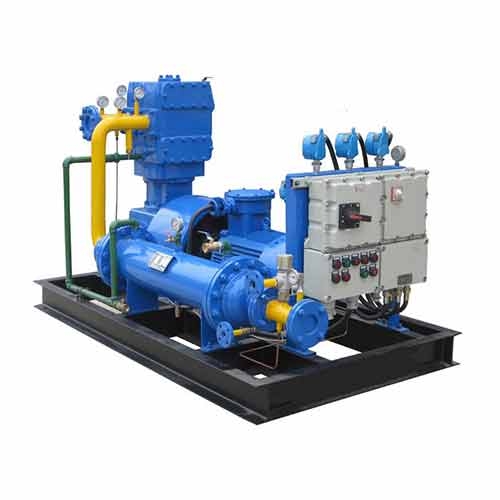Demystifying the Compressor Piston Rod

Hello, fellow compressor enthusiasts! If you’re diving into the world of air compressors or simply curious about compressor piston rods, you’ve come to the right place. In this article, I’ll be your guide as we explore the world of compressor piston rods, what they are, how they work, and essential maintenance tips to keep them in excellent condition. Whether you’re a seasoned pro or just starting your compressor journey, understanding the piston rod is essential for ensuring the longevity and efficiency of your compressor. So, let’s roll up our sleeves and dive right into the fascinating world of the compressor piston rod!
Introducing the Compressor Piston Rod
Let’s begin our journey by understanding what a compressor piston rod is:
What Is a Compressor Piston Rod?
A compressor piston rod is a vital component of a reciprocating air compressor, often referred to as a piston compressor. It connects the piston to the crankshaft and plays a pivotal role in converting the reciprocating motion of the piston into rotational motion, ultimately powering the compressor.
How Does the Compressor Piston Rod Work?
Now that we know what it is, let’s delve into the inner workings of the compressor piston rod:
1. Reciprocating Motion
- How It Starts: The compressor’s motor initiates the motion by turning the crankshaft. This, in turn, moves the piston rod connected to the piston.
- What Happens: As the crankshaft rotates, it causes the piston rod to move in a reciprocating (back-and-forth) motion within the cylinder. This motion creates a vacuum during the suction phase, drawing in air, and compresses the air during the compression phase.
2. Conversion to Rotational Motion
- How It Works: The piston rod’s reciprocating motion is converted into rotational motion by the crankshaft. This rotational motion powers the compressor’s other components, including the valves and motor.
3. Continuous Cycling
- What Happens: The piston rod continues its reciprocating motion as long as the compressor is in operation, ensuring a constant supply of compressed air.
The Role of the Compressor Piston Rod
The compressor piston rod is more than just a connecting piece; it’s a critical component for several reasons:
1. Power Transfer
- The piston rod efficiently transfers power from the motor to the piston, allowing the compressor to perform its compression cycle.
2. Reciprocating Motion
- Its reciprocating motion is what enables the compressor to draw in and compress air, creating the compressed air supply.
3. Efficiency
- A well-maintained piston rod is crucial for maintaining the compressor’s efficiency and ensuring it delivers the required air pressure and volume.
Maintaining Your Compressor Piston Rod
Now that you understand the importance of the compressor piston rod, let’s explore how to keep it in excellent condition:
Step 1: Visual Inspection
Perform regular visual inspections of the piston rod and its connections. Look for signs of wear, damage, or misalignment. Address any issues promptly to prevent further damage.
Step 2: Lubrication
Proper lubrication is essential for the piston rod’s smooth operation. Ensure that the rod and its bearings are adequately lubricated according to the manufacturer’s recommendations.
Step 3: Cleanliness
Keep the compressor and its components clean and free of dust, debris, and oil residue. A clean environment helps maintain the piston rod’s efficiency.
Step 4: Alignment
Check the alignment of the piston rod to ensure it moves smoothly within the cylinder. Misalignment can cause excessive wear and decreased performance.
Step 5: Follow Manufacturer Guidelines
Always adhere to the manufacturer’s maintenance guidelines, including recommended service intervals and procedures, to keep your compressor piston rod in peak condition.
FAQs About Compressor Piston Rods
Q1: Can I replace a compressor piston rod myself?
Replacing a compressor piston rod is a complex task and requires specialized tools and knowledge. It’s best to leave this task to trained professionals.
Q2: How do I know if my compressor piston rod is malfunctioning?
Common signs of a malfunctioning piston rod include unusual noises during operation, reduced compressor efficiency, and fluctuations in air pressure. If you notice any of these issues, have the rod inspected.
Q3: Can I use any lubricant for the compressor piston rod?
It’s essential to use the lubricant recommended by the compressor manufacturer. Using the wrong lubricant can lead to rod damage and decreased performance.
Q4: How often should I perform maintenance on the compressor piston rod?
The frequency of maintenance depends on factors like usage and operating conditions. Regular visual inspections and lubrication are typically recommended, with more extensive maintenance as needed.
Conclusion
The compressor piston rod may seem like a small component within your piston compressor, but it plays a pivotal role in ensuring the efficiency and performance of your compressor. Understanding how it works and how to maintain it can save you from unexpected downtime and costly repairs.
By following the maintenance steps and safety precautions mentioned in this article, you can keep your compressor piston rod in optimal condition. Whether you’re inflating tires, powering tools, or running industrial processes, your compressor piston rod ensures that the heart of your compressor keeps pumping, providing you with a steady supply of compressed air.
For top-quality compressors and related products, check out CN Compressors’ offerings, including their process compressor and nitrogen compressor. These reliable compressors are equipped with efficient piston rods, ensuring consistent performance and durability.
So, with your newfound knowledge of compressor piston rods, you’re well-prepared to maintain your compressor and tackle your projects with confidence. Happy compressing!
